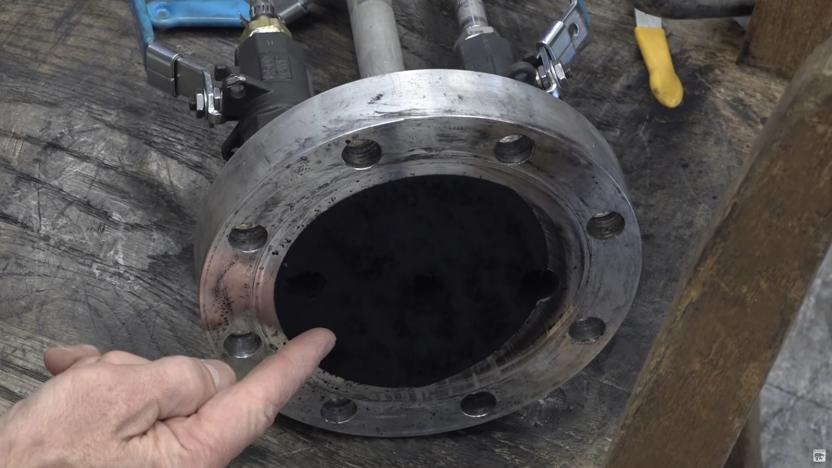KansasStateUniversity
Latest

Explosions may be the answer to mass-producing graphene
Graphene is difficult and expensive to mass produce, but while trying to make something else altogether, Kansas State University (KSU) scientists may have lucked into a promising technique. The team was attempting to make carbon soot aerosol gels by detonating acetylene gas and oxygen with a spark plug. That yielded soot resembling "black angel food cake," according to lead researcher Chris Sorensen. It proved to be graphene, a discovery that could pave the way for cheaper manufacturing of lightweight but incredibly strong materials, superconductors, and more.

EPA hands out $4.5 million to build better air pollution sensors
The Environmental Protection Agency doesn't just want to clamp down on pollution... it wants to develop the technology that helps spot that pollution. It's handing out a total of $4.5 million in grants to six research teams (including Carnegie Mellon, MIT and the University of Washington) to help develop lower-cost, easier-to-use air pollution sensors. EPA officials hope that this will help neighborhoods track their own air quality and improve health on a local level. You'd have a better idea of whether or not industry really is contributing to the smog in your neighborhood, for instance. Although it'll likely take a long while before you see results come out these grants, they could easily pay off if they lead to cleaner air in your neck of the woods.

Researchers capture first-ever images of atoms moving inside a molecule
The headline sums it up nicely but really, those photographic acrobatics account for only part of the story. Starting from the beginning, a research team led by Louis DiMauro of Ohio State University used an "ultrafast" laser to knock an electron out of its orbit, which scattered off the molecule as it fell back toward its natural path. That ripple effect you see in that photo up there represents any changes the molecule went through during the quadrillionth of a second that transpired between laser pulses. Yes, that's the kind of rare, psychedelic shot that's sure to earn DiMauro and team bragging rights, but the scientists also say this technique could have practical implications for observing -- and ultimately manipulating -- chemical reactions at an atomic level. Of course, it could be a long time yet before scientists analyze complex proteins in such detail: for the purposes of this experiment, the researchers stuck with simple nitrogen and oxygen molecules, with which chemistry scholars are already quite familiar. In fact, the researchers don't elaborate at all on specific studies where this technique might be useful, but you might want to hit up the source link nonetheless for some of the more technical details of how they pulled off this experiment in the first place.

GumPack wearable vitals monitor: the new MedicAlert bracelet?
It may not have the charm or good looks of, say, the uBOT-5, but a new wearable vital signs monitor could cut back on doctor's visits for the chronically ill. Produced by a Kansas State University student, the GumPack -- known as such for its size -- is a multi-sensor monitoring device that fits in the palm of your hand and relays vital stats to your doctor via the internet. Along with a built-in camera and microphone for record keeping, as well as WiFi capabilities for connectivity, the battery-powered GumPack will sport various sensors, like a reflectance pulse oximeter or a two-thumb ECG. The monitor is still in the concept stage, and will likely not be available for mass-market distribution for years -- if ever -- but with technology like this in the works, the "I've fallen and I can't get up" lady might as well start looking for a new gig.



